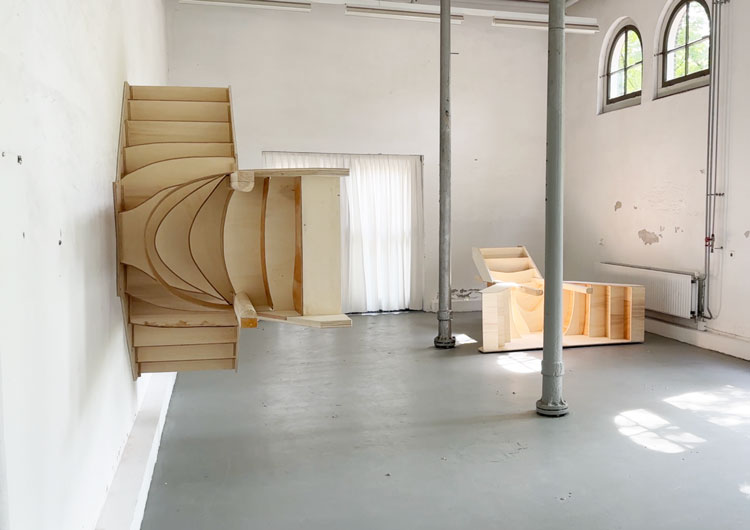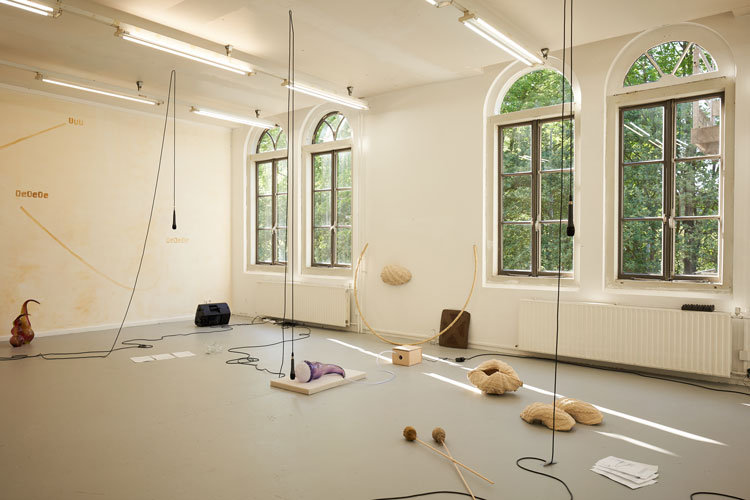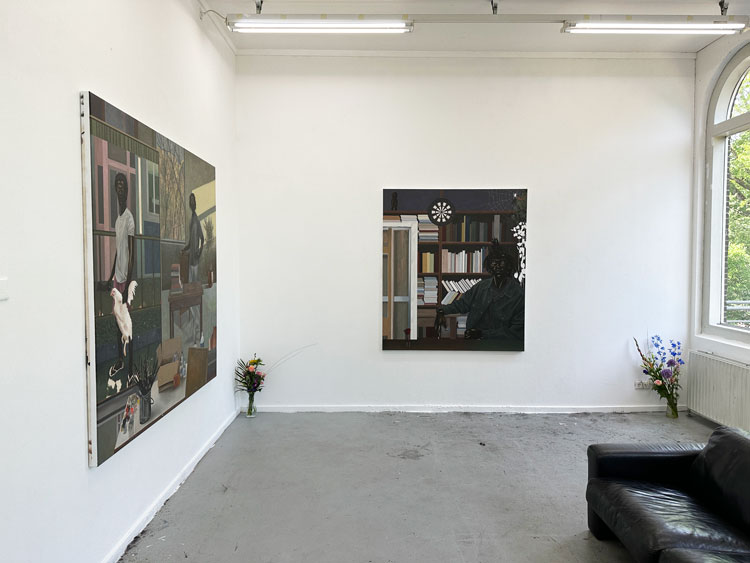Each year, to coincide with Amsterdam Art Week, artists at the Rijksakademie open their studios to the public, displaying the culmination of their two-year residency. The former cavalry barracks – where the residency has been located since 1992 – becomes a Borgesian labyrinth of overlapping pockets of creativity. We interviewed three residents, whose practices differ markedly in form yet share a deeply autobiographical approach that distorts notions of selfhood and place.
Nora Aurrekoetxea focuses on her home in Amsterdam, disorienting domestic architecture to ask us to contemplate the way it shapes us and ingrains itself in our bodies and psychology.
Nora Aurrekoetxea’s work encourages contemplation of the way we are physically and mentally conditioned by the forms we inhabit. The floor of her studio at Rijksakademie is flecked with metal moulds she has made of (and left inside) the holes one would normally expect to be covered. Dominating the room are two wooden bifurcated staircases – replicating the one in the house she has been living in during her residency – both rotated by 90 degrees, one placed on the floor, the other hung on the wall. By disrupting the body’s naturalised inclination to adapt to stairs, Aurrekoetxea’s uncanny distortion is suggestive of “falling”, with all its psychological and metaphorical connotations.

Nora Aurrekoetxea, installation view, Rijksakademie Open Studios, Amsterdam. Photo: Martin Kennedy.
AYO reflects on her upbringing and ancestry in Uganda from her current position as a resident of the Netherlands, using sculpture, sound and performance to create an in-between space of ambiguous, embodied translation.
AYO’s installation charts incomplete passages of cultural translation, the arrangement of objects, sounds, and texts suggesting an archipelago. Here, she talks about various kinds of interrelation: between the English of her schooling and the Leb-Lango that is her mother tongue, life in the city and at her grandparents’ homestead in northern Uganda, and life in Uganda and life in the Netherlands. Navigating these crosscurrents, AYO’s phonetic score – or “sound sculpture” – embodies her memory of her grandparents’ homestead, responding to the inadequacy of standardised language to convey memory between cultures. Further establishing a kind of mnemonic materiality of sound are her glass-blown sculptures based on the abu, a traditional Luo musical instrument.

AYO: A score for Atat's homestead, installation view, Rijksakademie Open Studios. Photo: Tomek Dersu Aaron.
Eniwaye Oluwaseyi paints figures, including himself, friends and members of his family, within compositions that explore the transience of identity.
There is a dreaminess in Eniwaye Oluwaseyi’s paintings, with the people he depicts existing between dimensions, one of which could be the everyday world, the other a more psychological realm. His paintings at the Rijksakademie, for instance, often feature pictures within the picture, establishing split realities within a single image, with some passages almost dissolving into abstraction. In this way, Oluwaseyi finds a correspondence between the mythic nature of image-making and the transience of existence. As he explains in this interview: “Everyone at this point is right in-between, whether socially or politically, because we are looking at the past and hoping for a better future.”

Eniwaye Oluwaseyi, installation view, Rijksakademie Open Studios, Amsterdam. Photo: Martin Kennedy.
Interviews by TOM DENMAN
Filmed and edited by MARTIN KENNEDY